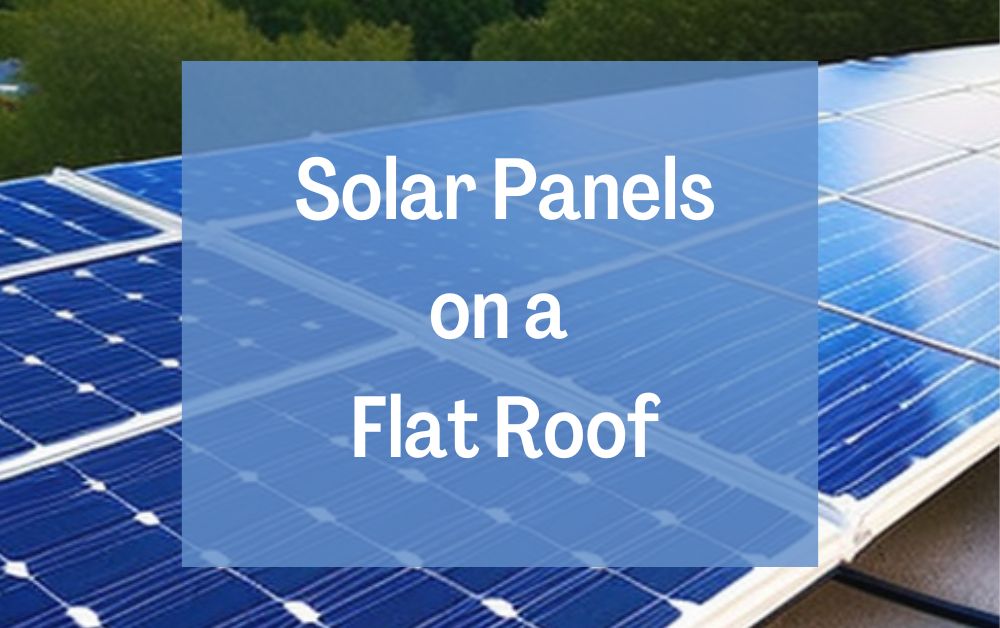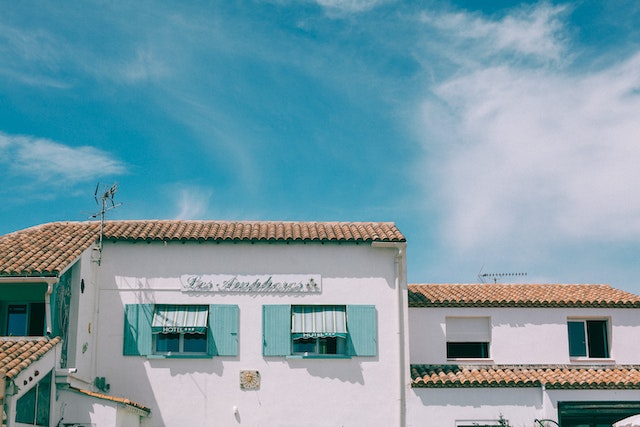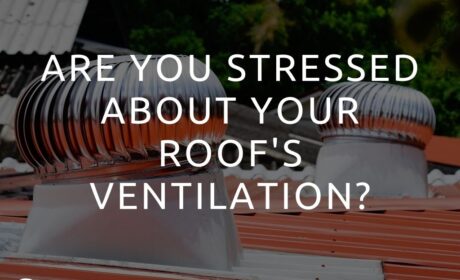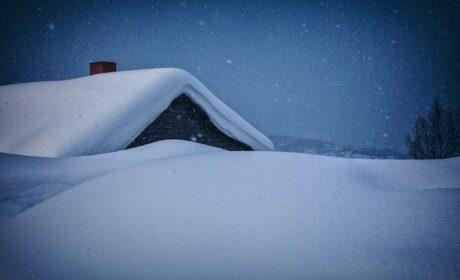
You’re thinking about installing solar panels. And you want to save energy and cut your electric bills. The only challenge is to angle the solar panels so they catch the sun’s rays. If you have a flat roof, what do you do? Is it still possible to install solar panels on a flat roof?
The easy answer is yes. You can install solar panels on your flat roof. But there are some things to consider before installing solar panels on it. If you have a pitched roof you might not even notice them.
Solar panels on a flat roof

You can install solar panels on a flat roof provided your roof is in excellent condition. Also there are no significant barriers nearby, such as trees or any shades. They can obscure the sun and reduce your energy production.
In fact a flat roof may be better than a tilted one for solar installation. Confused? Keep reading to find how.
One reason is that the solar panels are less visible from the street. It retains the visual design value of your home. But there are some pitfuls you must know before going solar with flat roof.
Drawbacks of flat roofed solar panels
There are three disadvantages to mounting solar panels flush against a flat roof:
- They become dirtier with time, and dirt lowers productivity.
- In the Northern Hemisphere, the sunlight goes from east to west due to the movement of the sun each day. The track always passes south of the sky. As a result, panels do not receive as much sunlight as panels inclined southward.
- The manufacturer’s guarantee on solar panels can be void when they’re laying flat. Because water collects between the gap, the frames, and the module’s glass layer.
You need to seal it with silicon, just like you do in the bathroom to lock out water. There is a chance that water may break the barrier and destroy the solar panel over the next decade or so.
Equipment required for installation
You can simply lay solar panels flat against a pitched roof. But mounting solar panels on a flat roof requires some specific equipment. Angled mounting improves solar exposure as well as energy production.
There are a lot of tilt-up racking and assembly systems now. You can use that to slant the panels up. The cost isn’t much more than pitched roof mounting.
Is installing solar panels cost more on a flat roof?

It may be somewhat more costly. Your installer’s use angled mounts. This adds a minor amount to the overall cost of installation. Other considerations can lessen the price difference.
Around 10% of the cost of solar panels goes towards installation and labor. The cost difference between installing a basic 7 kW home solar power system that uses tilt-up mountings and installing it on a sloped roof is usually just approximately $800.
Benefits of working on a flat roof:
The additional cost of applying solar panels on a flat roof is lessened. Working on a flat roof is naturally more convenient and safer than working on a tilted one.
- Workers on an inclined roof require particular protective gear to avoid falling off. On a flat roof, these concerns are eliminated. Workers can move about securely, and flat roof materials are less likely to be damaged while mounting them.
- Roofing components like shingles are prone to detach throughout the process. Flat roof materials, on the other hand, are far less likely to be affected during installation.
Does a flat roof affect solar panels’ performance?
Slanted roofs have solar panels that angle according to the roof angle and direction.
You can position the panels in every direction and tilt them to whatever degree you desire on a flat roof. Because you have this freedom, you can enhance your electrical output.
Now, you have all the chances to optimize your solar panels’ exposure to the sun and electricity production, by tilting them south and adjusting the panels to an angle that corresponds to your home’s latitude.
Do you need an expert to go solar?
Solar panels on a flat roof can be challenging. Every company can’t put solar panels on a flat roof. However, if that type of roof is common in your region, plenty of local solar installers will most likely be able to serve you.
Even if it isn’t, there are very certainly some installation companies in your vicinity who can assist you.
What are the possible dangers?
Mounting solar panels is safer on a flat roof than on a sloped roof. But after installation, some complications may develop.
The first is the dirt problem. Tilted solar panels clean themselves because water streams off, carrying almost all the debris and dirt with it. Flat panels do not provide this advantage.
Another key problem with is leak under solar panels on a flat roof.
Rainwater might collect around and on your panels if they’re flat. Your roof might get rusty and damage.
Thankfully, there are some methods for avoiding water pooling and preventing dirt collection.
The most effective option is to tilt the solar panels at a specific angle. Even a 3 or 4-degree tilt can reduce the collection of water and keep the system clean.
You can also combat pooling during the installation process. Drill the panels directly into the roof which lowers the chance of pooling.
Other methods to install solar panels on a flat roof

The ballast mount method is the most popular way to put solar panels on a flat roof. This method doesn’t require roof penetration; rather, weights hold the solar panels in place.
Your installer will install a metal rack and mount solar panels on it. Once you’ve got the racking system up, you can secure it with concrete blocks.
When constructing your solar panels, the installer will estimate how much weight these blocks must have. It will help to keep your solar system safe and sound even in high winds.
Many people are hesitant to penetrate their roofs since leaks may cause major difficulties and costly repairs. The attachment system keeps your roof dry and safe.
Is it always important to tilt panels on a flat roof?
They do not need to be. But, tilting the solar panels to an optimal angle will result in more energy pouring out of them. It might be hard to get a guarantee for panels tilted below 2 degrees due to leakage damage.
The last thing you want to do is install your panels at an angle. After the solar panel installation, you can adjust the inclination to suit your needs.
Which type of solar panel is preferable on a flat roof?
At low angles, frameless panels perform better. Most panels feature an aluminum frame. This protects them, secures the edges from breakage, and acts as a point of contact. In cases where panels must tilt below 10 degrees, there are frameless options.
Water flows off them more easily when there is no elevated frame at their edge. Water will still gather on their surface if they are perfectly flat. But still not that much.
Manufacturers are working on frameless panels to cut prices. Most frameless panels have double glass and cost far more than traditional modules.
When you consider the following extra benefits of frameless solar panels. It may convince you to pay extra.
- Typical warranted damage per year is 0.5% as compared to framed panels which are 0.7%.
- Typically, a 30-year performance warranty is provided rather than a 25-year warranty.
- Because there is no plastic back layer, there is less possibility of long-term productivity difficulties.
Conclusion
A flat roof at your home does not stop you from installing a fully working solar panel system. For around the same cost, it can even deliver better energy production than a sloping roof. It’s because you can control the tilt. Mounting solar panels is safer on a flat roof than on a sloped roof.
Tilted solar panels clean themselves because water streams off, carrying almost all the debris and dirt with it. You can book a free roof inspection with us now.






